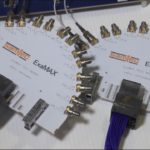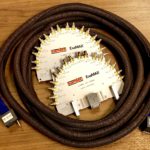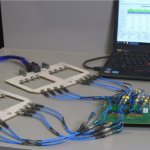Long Reach Backplane Cable
This live demonstration from DesignCon 2019 shows how Samtec’s ExaMAX® backplane connector, combined with Samtec Flyover® technology, achieves high density and very long reach. Here, the reach is five meters for a rack-to-rack interconnect system.
In this video, Samtec’s Gustavo Blando walks us through the topology and discusses system performance.
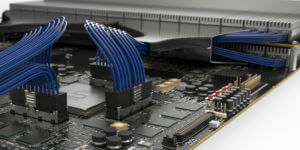
Samtec Flyover systems can be used in mid-board applications to achieve next gen speeds with longer reach instead of routing signals through lossy PCBs, vias, and other components. A common mid-board application places the cable assembly connector close to the chip, directing the signal to the front panel.
Signal Path
An eSilicon 7nm DSP SerDes generates PRBS-31, 56 Gbps PAM4 signals; the signals are routed from the eSilicon test-board via Samtec Bulls Eye® High-Performance Test System cable assemblies. These are the BE40A series.
These coaxial cables connect to an ExaMAX paddle card with an EBTF-RA backplane connector. The signal then travels through a five meter ExaMAX backplane cable assembly, the EBCM series.
The channel repeats on the other side ultimately getting back to the eSilicon RX. In this
Performance
The 1.02e-11 BER, which is several orders of magnitude better than the spec, is nearly
Eye Speed Cable typically achieves the same results as competitors’ cable, but at four gauge sizes smaller.
Samtec Flyover
The very low skew and ultra-low loss of Eye Speed twinax cable allows Samtec Flyover designs to extend signal reach and density to achieve next gen speeds by routing signals via ultra-low skew twinax cable instead of lossy PCBs.
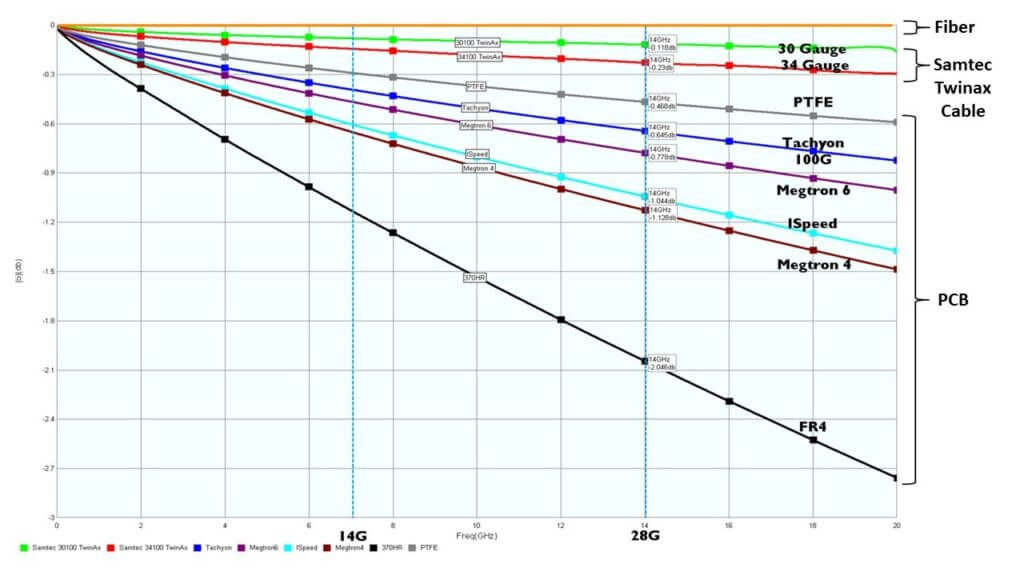
Thanks to the unparalleled loss performance of Eye Speed twinax cable, systems can be architected with smaller gauge twinax providing a more flexible solution for cable management with less thermal interference.
And finally, removing high speed traces reduces the cost and complexity of the PCB.
Here’s an article in Electronic Products about the collaboration between Samtec, eSilicon, and Wild River Technology to make this happen.
And here’s an article from our friends at Signal Integrity Journal discussing how this test system addresses the demands of 56/112G PAM4 using the ppcoming IEEE P370 standard.
Here’s a link to learn more about Samtec Flyover. If you have technical questions please contact the Signal Integrity Group.
